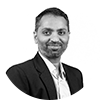In 2021, the automotive industry saw significant advancements in AUTOSAR and ADAS:
AUTOSAR Trends and Innovations
Adaptive AUTOSAR: Greater flexibility and scalability through support for dynamic software updates, service-oriented architectures, and complex algorithms needed for autonomous driving.
Integration with Classic AUTOSAR: Enhanced efforts to integrate Adaptive and Classic AUTOSAR platforms, improving resource management and communication.
Cybersecurity Enhancements: Introduction of robust cybersecurity measures, including enhanced cryptographic algorithms and secure communication protocols to protect against cyber threats.
Standardization Efforts: Focus on standardizing interfaces and communication protocols, fostering interoperability among manufacturers and suppliers, crucial for developing autonomous and connected vehicles.
ADAS Trends and Innovations:
AI and Machine Learning: Improved features like adaptive cruise control, lane-keeping assist, and pedestrian detection through AI and machine learning algorithms.
Sensor Fusion: Advances in sensor fusion technology, combining data from cameras, lidar, radar, and ultrasonic sensors, enhanced ADAS precision.
V2X Communication: Progress in Vehicle-to-everything (V2X) communication technology, allowing vehicles to communicate with each other and infrastructure, enhancing situational awareness and supporting cooperative driving.
Regulatory Compliance: ADAS developments influenced by evolving safety regulations and standards, ensuring enhanced safety and reliability.






